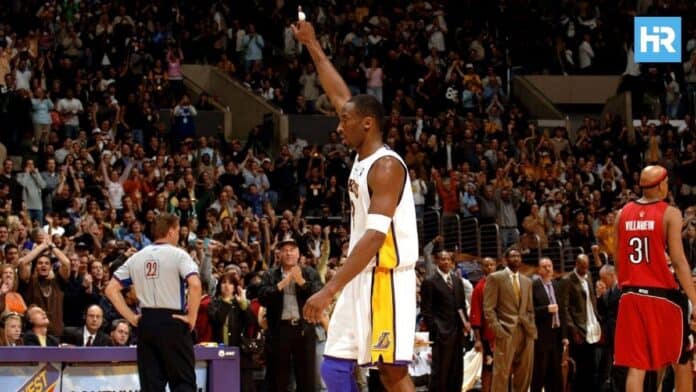Baccarat ranks among the simplest casino games yet maintains one of the lowest house edges available. Online platforms offer various baccarat formats, including live dealer tables and random number generator versions, each presenting distinct pacing and transparency characteristics.
Understanding core rules, third-card drawing procedures, and bet options enables informed play while recognizing which bets offer mathematical value versus those carrying prohibitive edges.
Core Punto Banco Rules and Round Flow
Punto Banco represents the standard online version of baccarat. The game involves comparing two hands called Player (Punto) and Banker (Banco), with participants wagering on which hand totals closer to nine or whether the round ends in a tie.
Initial Deal and Hand Values
Each round begins with players placing bets on Player, Banker, or Tie outcomes. Both hands receive an initial two-card deal. Aces count as one, cards two through nine maintain face value, and tens plus face cards count at zero.
Hand totals are calculated by summing card values and dropping tens digits from results exceeding nine – a hand containing 7 and 8 totals five rather than fifteen.
Round Settlement and Commission
After applying third-card rules, the hand closest to nine wins. Winning Player bets pay even money at 1:1. Winning Banker bets typically pay 0.95:1 after deducting five percent commission. When both hands finish equal, payouts reach 8:1 or 9:1.
Bet Options, Payouts, and House Edges
Three primary betting positions exist in standard baccarat, each carrying distinct mathematical characteristics affecting long-term returns.
Banker Bet Analysis
Banker bets produce a house edge of approximately 1.06 percent after a five percent commission deduction. This represents the lowest edge among primary baccarat wagers, stemming from favorable third-card drawing rules.
Despite commission costs, Banker betting offers superior mathematical positioning for extended play.
Player Bet Characteristics
Player bets carry a 1.24 percent house edge with even-money 1:1 payouts. The marginally higher edge compared to Banker reflects disadvantageous third-card drawing sequences.
Player betting eliminates commission tracking and provides more straightforward payout calculations. When evaluating platform options, the best online casino websites emphasize game variety and transparent structures, featuring comprehensive table game selections, and provide optimal playing environments.
Tie Bet Mathematics
Tie bets typically pay 8:1 or 9:1 but carry a devastating 14.36 percent house edge with 8:1 payouts or 4.84 percent with 9:1 structures. These edges dramatically exceed the main bet options.
Ties occur approximately 9.5 percent of the time. Players should avoid Tie bets regardless of payout generosity.
Third-Card Drawing Rules
Baccarat’s defining characteristic involves rigid third-card drawing rules, eliminating player decisions after initial bets. Understanding these automatic procedures clarifies why specific outcomes occur and how hands develop.
Player Hand Drawing Rules
The player’s hand draws the third card based solely on the initial two-card total. Totals of zero through five trigger automatic draws, while six and seven stand. Eight and nine represent natural wins requiring no additional cards.
Banker Hand Drawing Rules
Banker hand drawing rules incorporate complexity by considering the Player’s third card when applicable. The banker draws on totals zero through two, regardless of the Player’s third card. On totals three through six, the specific Player’s third-card value determines whether the Banker draws.
Banker Drawing Chart:
- Banker 0-2: Always draws
- Banker 3: Draws unless the Player’s third card is 8
- Banker 4: Draws if the Player’s third card is 2-7
- Banker 5: Draws if the Player’s third card is 4-7
- Banker 6: Draws if Player’s third card is 6-7
- Banker 7: Always stands
- Banker 8-9: Natural, no draw
These conditional rules create the Banker’s mathematical advantage.
Online Baccarat Variants
Multiple baccarat variations exist online, each modifying payout structures or introducing rule changes affecting house edges and playing dynamics.
Commission Baccarat
Standard commission baccarat deducts five percent from winning Banker bets, maintaining a 1.06 percent house edge. This traditional format is most commonly found at established platforms and live dealer tables.
Commission-Free and Super 6
Commission-free baccarat eliminates the 5% Banker commission but modifies the winning conditions. The Banker wins with totals of six at odds of 0.5:1, rather than even money, while all other Banker victories pay 1:1. This adjustment increases the Banker’s house edge to approximately 1.46 percent.
Super 6 represents a similar format with identical six-value Banker win payouts.
EZ Baccarat
EZ Baccarat removes commission and declares certain Banker wins as pushes. The banker wins with three-card totals of seven, pushing rather than paying, and maintains a roughly 1.02 percent house edge.
Dragon 7 and Panda 8 side bets frequently accompany EZ Baccarat, paying 40:1 for specific three-card seven and eight outcomes. These carry substantial house edges.
Mini and Midi Baccarat
Mini baccarat reduces table size and betting limits, attracting casual players with lower entry barriers. Rules remain identical to standard baccarat. Online platforms often label low-limit tables as “mini baccarat” regardless of their virtual format.
Midi baccarat represents an intermediate format between mini and full-size tables.
Speed and Squeeze Variants
Speed baccarat accelerates the dealing process, completing rounds in 25-30 seconds, compared to the standard 45-60 second pace. This format suits experienced players who are comfortable with rapid decision-making.
Squeeze baccarat incorporates theatrical card reveals, where dealers slowly bend and expose cards, extending rounds to 90 seconds or more, for players seeking mobile-optimized, squeeze, and speed formats. Sites featured in mobile casino reviews offer touch-responsive interfaces that accommodate various baccarat speeds.
Side Bets and Their Edges
Side propositions supplement main baccarat betting with specific outcome wagers carrying substantially higher house edges than Player or Banker bets.
Pair Bets
Player Pair and Banker Pair bets win when respective hands receive matching-rank initial cards. Payouts typically reach 11:1 with house edges around 10.36 percent.
Pair betting provides occasional windfall opportunities but drains bankrolls through high-edge exposure when pursued systematically.
Dragon Bonus
The Dragon Bonus offers progressive odds based on the winning margin, with natural wins and substantial point differentials yielding elevated payouts that can reach 30:1. House edges typically range from 2.65% to 9.37%, depending on the paytable structure.
Other Common Side Bets
Lucky Bonus, Royal 9, and suit-based propositions are available on various platforms, universally carrying house edges exceeding three percent and frequently surpassing ten percent.
Players prioritizing edge minimization should avoid side bets entirely, reserving bankroll for Banker wagers.
Live Dealer Versus RNG Baccarat
Online baccarat is available in two primary formats, each with distinct characteristics that affect transparency, pacing, and the overall playing experience.
Live Dealer Advantages
Live dealer baccarat features human dealers broadcasting from studios, shuffling physical cards, and conducting hands in a manner identical to land-based casinos. This format provides visual confirmation of fair dealing.
Live games operate at the traditional casino pace of 50-60 hands hourly. Squeeze and ceremonial dealing options exist exclusively in live formats.
RNG Baccarat Characteristics
A random number generator for baccarat utilizes algorithms that produce instant outcomes, completing 200-400 hands per hour. This accelerated pace increases hourly bankroll exposure.
RNG versions typically offer lower minimum bets than live tables. Players exploring diverse payment options can find Bitcoin casino sites that offer cryptocurrency deposits alongside traditional banking options, providing access to RNG games.
Scoreboards and Pattern Tracking
Both formats display “roads” or scoreboards tracking previous outcomes in grid patterns. These include Big Road, Bead Plate, Big Eye Boy, Small Road, and Cockroach Road.
Scoreboards serve superstitious purposes rather than predictive functions, as each baccarat hand operates independently with fixed probabilities.
Bankroll Management and Table Selection
Disciplined fund allocation and appropriate limit selection protect against variance while extending playing sessions.
Unit Sizing Guidelines
Conservative bankroll management suggests betting 1-2 percent of session funds per hand. A $1,000 session bankroll accommodates $10-$20 base units, providing 50-100 betting opportunities.
Aggressive 5 percent sizing increases variance exposure but maximizes winning potential during favorable runs.
Table Limit Considerations
Minimum table limits should align with planned unit sizes. Players with $500 bankrolls should seek $5-$10 minimum tables rather than $25 minimums, which consume funds rapidly.
Maximum limits are primarily relevant for users of the progression system, although such strategies fail to overcome the house edge.
Commission Awareness
Players must account for five percent Banker commission when calculating returns. Winning $1,000 in Banker bets yields $950 after commission, resulting in a $50 reduction in actual profits.
Commission-free variants eliminate this calculation but typically introduce edge penalties that offset the convenience benefits.
Streaks, Patterns, and Betting System Reality
Baccarat attracts superstitious play through pattern-tracking traditions and betting progression systems, none of which alter fundamental house edges.
Streak Independence
Consecutive wins by a banker or player do not create predictive value for subsequent outcomes. Each hand operates independently with fixed probabilities, approximately 50.68 percent for the Banker and 49.32 percent for the Player, after accounting for ties.
Ten consecutive Banker wins produce an identical 50.68 percent Banker probability on the eleventh hand.
Pattern Tracking Futility
Road displays and pattern analysis offer no mathematical advantage, despite the use of elaborate tracking systems. The casino’s encouragement of pattern tracking through scoreboard provision confirms that such methods generate no genuine edge.
Players wagering based on perceived patterns engage in entertainment rather than advantage play.
Betting System Limitations
Martingale, Fibonacci, and Labouchere progressions adjust bet sizing without altering the underlying house edge. These systems alter variance distribution but fail to overcome the mathematical disadvantage.
Progression schemes increase ruin risk by demanding table maximum betting during unfavorable sequences. Players seeking enhanced privacy can explore no-KYC casinos that offer registration without requiring extensive documentation.
Responsible Play Tools and Session Setup
Online platforms provide various controls supporting healthy gambling habits and financial boundaries.
Deposit and Loss Limits
Deposit limits restrict funding amounts over specified periods, preventing impulsive increases to your bankroll. Loss limits terminate sessions when predetermined deficit thresholds are reached.
Setting limits proactively ensures rational decision-making rather than emotionally-driven adjustments during active sessions.
Session Time Controls
Time limits and reality checks interrupt play at regular intervals, prompting assessment of session duration and financial position. These tools combat time distortion common in online gambling.
Players should establish maximum session durations independent of financial outcomes.
Self-Exclusion Options
Voluntary exclusion programs block account access for specified periods, ranging from a few days to permanent closure. These mechanisms provide essential support for players recognizing problematic gambling patterns.
Most jurisdictions require the availability of self-exclusion options, with reputable platforms prominently displaying these options and processing requests promptly.
Conclusion
Playing online baccarat successfully requires understanding the mechanics of Punto Banco, third-card drawing rules, and the mathematical realities governing bet selection. Banker betting produces the lowest house edge at 1.06 percent, with Player betting close behind at 1.24 percent. Tie wagers and side bets carry prohibitive edges.
Live dealer and RNG formats offer distinct advantages in terms of transparency, pacing, and minimum stakes. Pattern tracking and betting progressions provide entertainment without mathematical utility.
Responsible bankroll management, including appropriate unit sizing, deposit limits, and time controls, supports sustainable play. Approaching baccarat as probability-based entertainment rather than a pattern-exploitation opportunity maintains realistic expectations.
















